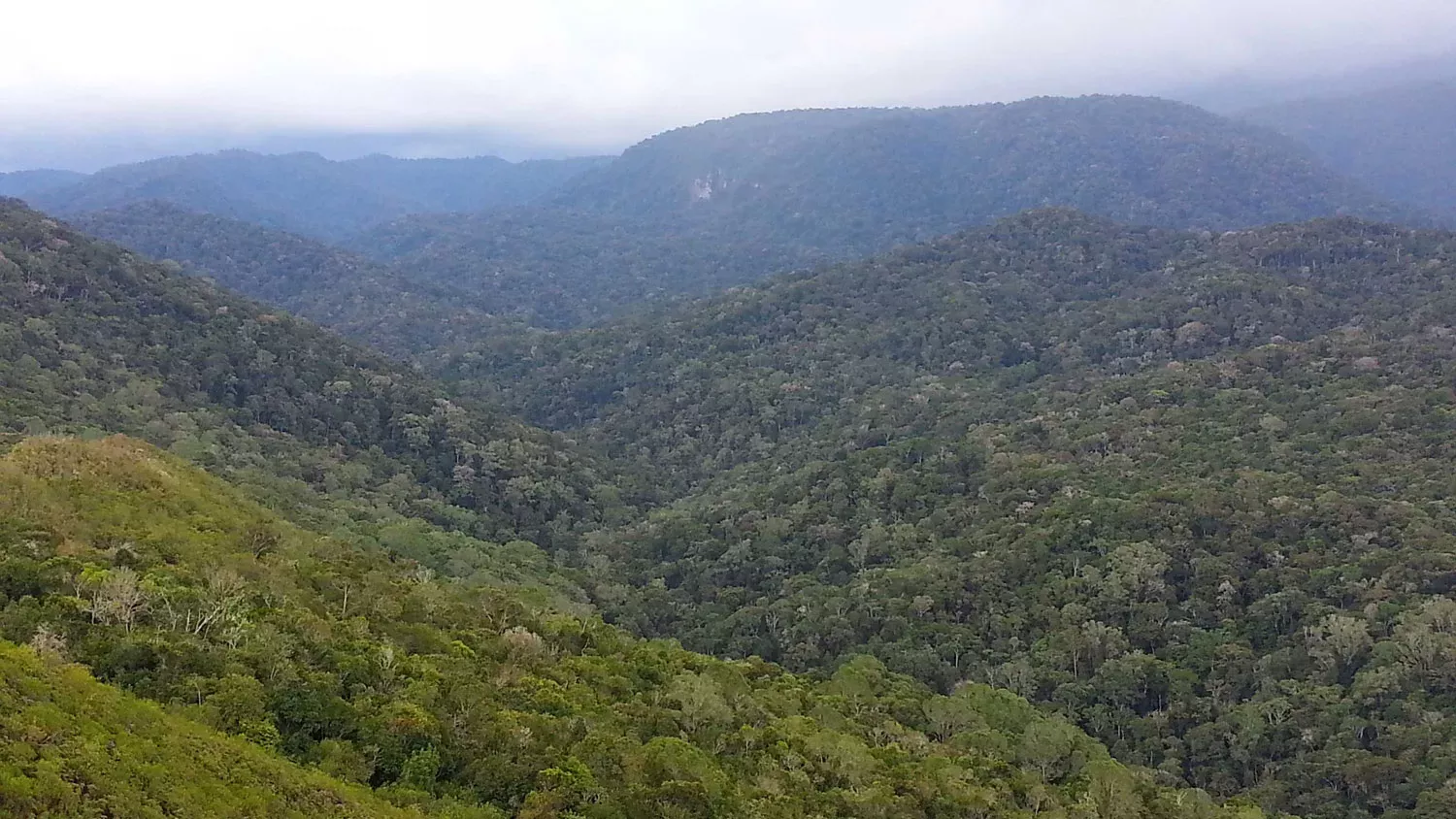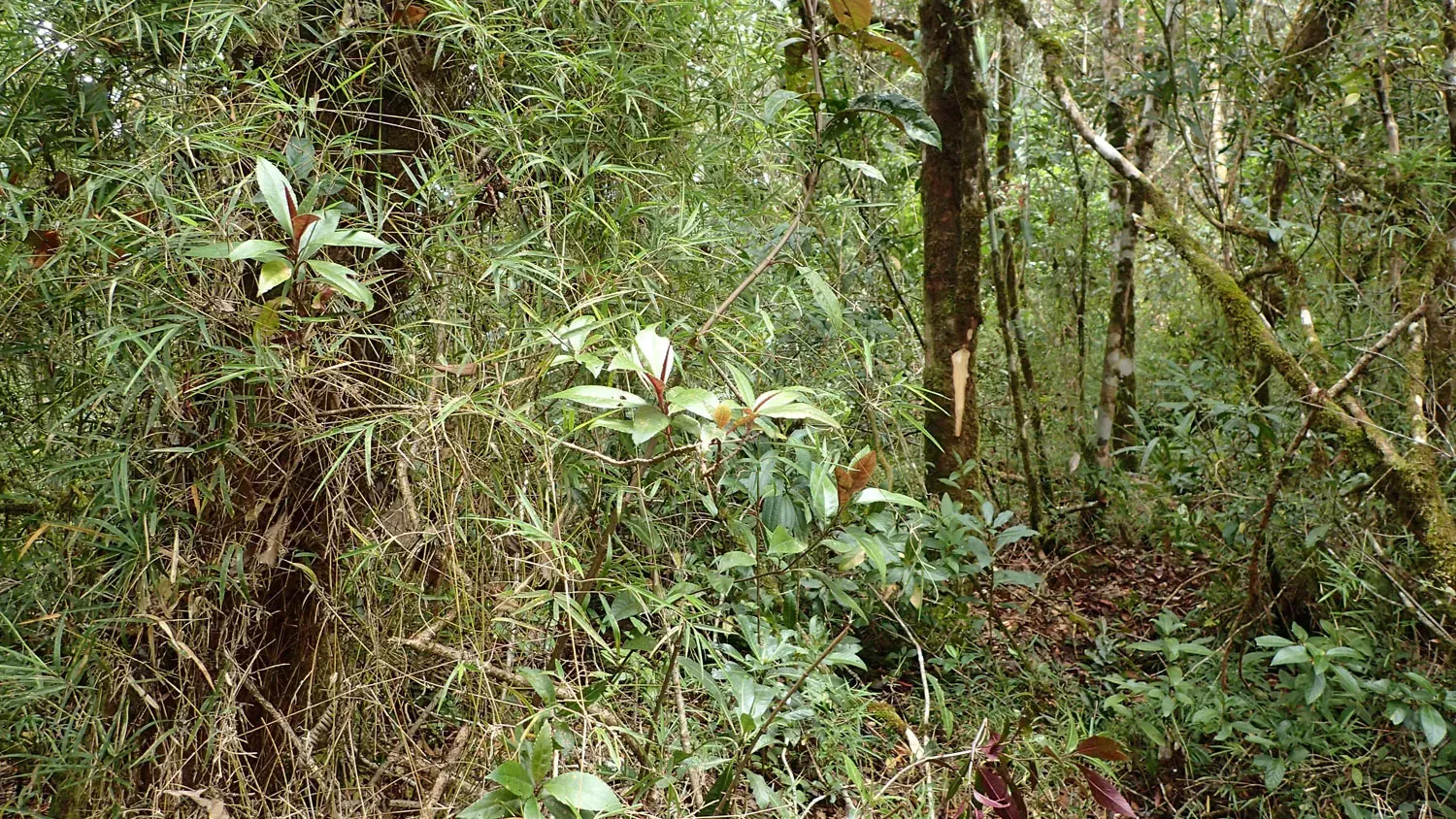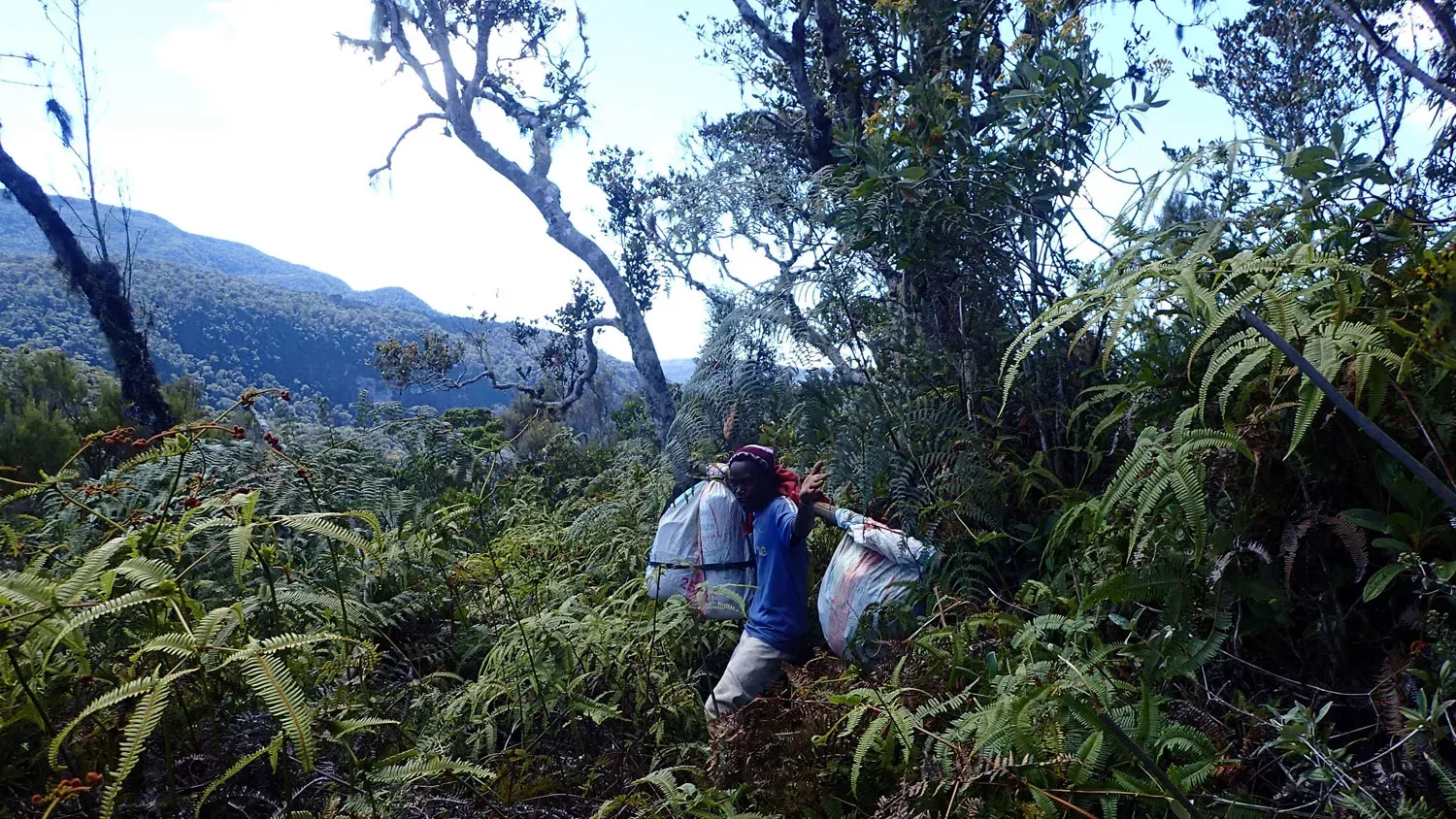9 January 2018
Climbing Madagascar’s highest mountain
Kew Scientist, Bat Vorontsova, joins a team of botanists from Madagascar and China on a challenging expedition to find rare species of bamboo.

Mysterious Maromokotro
The highest point of Madagascar is Mount Tsaratanana, the highest point of which is known as Maromokotro, rising to 2876m. There are no roads up the mountain and no proper paths. Our expedition was to find species of bamboo not seen for more than 100 years. The work will lead to a better understanding of their evolution.
It's said to be possible to walk from Mangaindrano village (where we would leave our vehicles), to the peak of Maromokotro in just three days. We planned to complete the return journey in 10 days, completing all our botanical work along the way.
Preparing the team in Mangaindrano village
Our expedition included seven botanists and two guides, Berkman and Samuel. After calculating our needs for 10 days of walking, we hired 14 local staff to carry the food and luggage, each porter carrying up to 30kg. We later found out that our two guides had never been up to the top of the mountain, and neither had any of the 14 porters, except for François Ndriamifaly (head porter).
Darkness in the forest
On setting off, our porters walked ahead at frightening speed, carrying our supplies tied to bamboo sticks, with the scientists lagging behind. The path headed steeply upwards through dense vegetation. We reached the rainforest on the second day, and started to collect specimens. Suddenly we noticed it had quickly become dark and the path was impossible to navigate even with torches. We were forced to camp on a narrow sloping patch of ground by a stream called Ranoantevialambazaha.

Bamboo forest!
The next day at dawn we were excited to see more bamboo plants around 100m above our campsite, and a real bamboo forest. Every direction was nothing but bamboo. It was not long until we found more bamboos in flower, something we were not even daring to hope for.
Bamboo flowers are essential for understanding evolution and building an accurate classification, but typical flowering periods of between 40–100 years mean it is rare to find them flowering in the wild. The fruiting branches of Hickelia perrieri obscured the sky, and every spikelet had a distinguishing character: several black hairs on the lemma, just as in the original description written by Madame Aimée Camus in 1924.
There were several different kinds of bamboo: Oldeania species produce majestic erect canes 10cm wide and made an elegant bamboo grove. Sokinochloa (hedgehog bamboo) was a climbing type of bamboo with wide, sturdy stems and remarkable swellings on the nodes. The understory was full of small thin culms of a narrow-leaved bamboo difficult to distinguish from a grass, with small slender spikelets: Nastus, but we do not yet know if it was just one species or several different ones.

Cooking rice in the cloud forest
After our exploration of this area, there was no trace of a path and every step sunk into the rotten mossy ground layer. We crossed a ravine holding on to rotting trunks of dead tree ferns. The porters complained loudly of hunger: people carrying awkward loads up a mountain need large and regular meals! Porters normally carry a personal allocation of rice, but water is deemed too heavy, so the group relies on forest streams to cook rice and eat. But this bamboo forest had no streams.
François has gone ahead alone with a machete to cut the way, and he had not returned as promised, so, the only person with any knowledge of the route was gone. We waited for François until three hours before sunset. Then we used GPS tracking to return to the previous night’s stream
Turning back
François was missing all night. He didn’t succeed in cutting a path all the way to the next stream, slept in a tree, and then walked back to join us in the morning. Our slow walking team probably could not make it to the next stream within daylight hours, and walking at night was just too risky. In the end, we decided to stay where we were, spent two more days studying bamboos and then turned back for home. Our GPS devices indicated we were still 12km away from Maromokotro and 780m below the peak.
Local customs protect vulnerable ecosystems
Many places in Madagascar have powerful customs intertwined with religious practice. For example, anyone visiting Maromokotro must bring a white rooster and abandon it in the forest as a sacrifice. We took a substitute almost-white chicken with us, but because we didn’t reach the summit there was no need to abandon it. We ate chicken soup on the way back.
It is an amazing privilege to be able to see a rainforest untouched by human influence, where even a modern well-equipped expedition like ours couldn’t succeed in reaching its destination. Local customs have a powerful influence in establishing respect for the forest as a special place and help to protect this area of northern Madagascar.

Our field team
This expedition would not have been possible without the following team of botanists, guides and porters:
Rivontsoa Andrimalala Rakotonasolo (PhD student, Kunming Institute of Botany and Royal Botanic Gardens, Kew), Bat Vorontsova (botanist, Royal Botanic Gardens, Kew), Vololotahina Razafindrahaja (senior botanist, Parc Tsimbazaza), Fabien Rahaingoson (botanist, Kew Madagascar Conservation Centre), Professor Tingshuang Yi (researcher, Kunming Institute of Botany), Zhang Ting (Seed Collecting Coordinator, Kunming Institute of Botany), Jingxia Liu (PhD student, Kunming Institute of Botany), Berkman and Samuel (guides), François Ndriamifaly (head porter), Jaosante Philippe, Jean Clebert, Naivo Arinosy, Ndremamody Cresente, Natapole Gusairé, Rambeloson Honorat, Be Stebi Ogusten, Jaomezara Lorme, Sofa, Belela, Bemozaka Farle, Ossel, Michael Maxbirae (porters), Jouelle (cook).
Also thank you to:
Chinese Academy of Sciences and Professor Dezhu Li for supporting Andrimalala Rakotonasolo’s PhD fellowship; Muséum National d'Histoire Naturelle and Thomas Haevermans for supporting work towards the Flora of Madagascar; Stuart Cable (RBG Kew) and the Kew Madagascar Conservation Centre (KMCC) for research collaboration; Madagascar National Parks, Direction Générale des Forêts, and Parc Botanique et Zoologique de Tsimbazaza for supporting the permit applications and granting our permits.
Find out more
Dransfield, S. (2016). Sokinochloa, a new bamboo genus (Poaceae-Bambusoideae) from Madagascar. Kew Bulletin 71: 40. Available online
Vorontsova, M.S., Clark, L.G., Dransfield, J., Govaerts, R. & Baker, W.J. (2016). World Checklist of Bamboos and Rattans. International Network of Bamboo and Rattan & Royal Botanic Gardens, Kew. 454 pp.Available online
Zhang, Y.X., Ma, P.F., Havermans, T., Vorontsova, M.S., Zhang, T., Nanjarisoa, O.P. & Li, D.Z. (2017). In search of the phylogenetic affinity of the temperate woody bamboos from Madagascar, with description of a new species (Bambusoideae, Poaceae). Journal of Systematics and Evolution 55(5): 453–465. Available online


.png.webp?itok=fy47fI7-)
